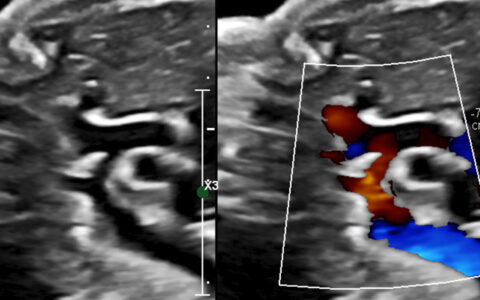Keeping donor hearts viable from recovery through surgery has been an ongoing challenge since the beginning of cardiac transplant. Cold storage transport has begun to give way to ex situ or machine reperfusion in recent years, with improved rates of success.
Now, in situ thoraco-abdominal normothermic regional perfusion (taNRP) has emerged as another promising method of maintaining heart function in conjunction with other organs.
Ashish Shah, M.D., endowed chair of the Department of Cardiac Surgery at Vanderbilt University Medical Center, has pioneered this procedure for resuscitation of the heart after circulatory death. He is an author on a 2022 multicenter study showing that including the taNRP option raised transplantation rates 23 percent over a seven-year period, with equal-to-superior outcomes compared with transplantation with traditional brain-death donors.
“We also see anecdotal evidence that keeping the hormones and nutrients going to the heart may protect it and render it more functional.”
Since 2020, Shah’s team at Vanderbilt has performed 90 transplants using taNRP, out of nearly 300 total heart transplants. He says that in contrast to machine perfusion or traditional recoveries, taNRP resuscitates hearts within minutes of death, bringing oxygen and nutrients to cardiomyocytes, thereby lowering or even reversing ischemic damage.
“We also see anecdotal evidence that keeping the hormones and nutrients going to the heart, versus using other methods that keep the heart isolated, may protect it and render it more functional,” he said. “Further, it is clear that the livers and kidneys from these taNRP donors are in better condition.”
Milestones in Transplantation
Nearly 7,400 people are on the heart transplant waiting list in the United States each year. About 3,700 hearts are harvested from 3.5 million annual deaths, reflecting what has been a stepwise improvement in both the number of Americans able to be donors and procedure advancements.
The original cold-storage method of transplanting healthy hearts from donors with brain death (DBD) was established in the 1970s and remains the standard. However, a major flaw in this method is that the process of warming and reperfusion of the heart is conducive to myocardial injury, Shah explained. By 2019, use of normothermic ex situ machine perfusion was the first major step taken to mitigate organ injury.
“All of these milestone advancements have enabled us to substantially improve the numbers and quality of donor hearts, leading to increases in short- and long-term survival rates,” Shah said. “We are now at a new frontier that focuses on what the future of physiology looks like and how it applies to transplantation.”
The Beating-heart Donor
The taNRP procedure is the latest in these advancements. In taNRP, the transplant team waits five minutes after life support is removed and breathing stops, and then clamps vessels to the brain and extremities. Circulation is then restarted for about 20 minutes while heart function is assessed.
“This enables the heart to receive not just blood, but organ-nurturing and maybe even organ rescue benefits in concert with the kidney, liver and other organs,” Shah said. “By stopping circulation to the brain, it also prevents any ‘shockwaves’ – surges of inflammatory catecholamines – that an injured brain generates.”
Retrospective Study Backs Expanding taNRP
In the recent study conducted by Shah and colleagues across 15 centers worldwide, the researchers retrospectively compared 157 recipients of donation after cardiac death (DCD) grafts using taNRP to 673 standard DBD controls. Comparisons were made within the same centers.
None of the recipients in the taNRP group died of primary graft dysfunction, while 21 DBD recipients did. Overall, the researchers saw better short-term and comparable one-year outcomes with taNRP.
They also found that simultaneously preserving multiple organs without employing organ-specific ex vivo machine perfusion devices lowered complexity and costs, which Shah says may be two to three times higher using devices currently available.
Toward an ex vivo Proxy
While using DCD donors is an important advancement to save lives today, the taNRP platform has stimulated Vanderbilt researchers to probe why an in situ resuscitation would be beneficial. Shah and his team have begun to focus on how the heart, liver and kidney may mutually benefit each other when one is injured.
“[Matthew Bacchetta, M.D.] has shown that in an intact organism, an organ can be in the business of fixing itself or another organ,” Shah said. “Maybe there’s some crosstalk where the liver recognizes the injured heart or other organ and switches into a rescue phenotype. We want to understand these processes and reproduce them in organoids and other ex vivo models.”




